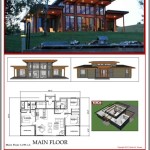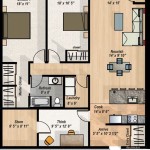Graph Paper For Floor Plans App Free Printables: A Comprehensive Guide
Creating accurate and effective floor plans is a crucial step in various projects, ranging from interior design and home renovation to architectural planning and real estate development. Among the tools available for this purpose, graph paper remains a surprisingly versatile and accessible option. The availability of free printable graph paper templates and user-friendly floor plan applications further enhances its utility. This article explores the benefits of using graph paper for floor plans, examines the functionality of floor plan apps, and provides information on accessing free printable resources.
Traditionally, floor plans were meticulously drafted by hand, utilizing tools like rulers, protractors, and specialized drawing instruments. Graph paper served as the foundational grid, ensuring accurate proportions and spatial relationships. Its evenly spaced lines provide a visual guide for representing measurements and maintaining consistency throughout the plan. Modern technology, including dedicated software and mobile applications, has streamlined the floor plan creation process, offering features such as automated calculations, 3D modeling, and collaboration tools. However, the fundamental principles of spatial representation and accurate measurement remain paramount, making graph paper-based planning a valuable skill and alternative method, especially for initial concepts and smaller-scale projects.
The advent of digital tools does not negate the inherent advantages of using graph paper. It offers a tangible and tactile experience, allowing users to directly interact with the plan and visualize spatial arrangements. This hands-on approach can be particularly beneficial during the initial brainstorming phase, facilitating rapid prototyping and exploration of different design options. Furthermore, graph paper requires no specialized equipment or software, making it an accessible and cost-effective solution for individuals and small businesses with limited resources. The readily available free printable graph paper templates further reduce the financial barrier to entry.
Benefits of Using Graph Paper for Floor Plans
The appeal of graph paper for floor plan design extends beyond its simplicity and cost-effectiveness. Several key benefits contribute to its continued relevance in the contemporary design landscape. These include enhanced spatial reasoning, improved accuracy in measurements, and facilitation of iterative design processes.
Firstly, graph paper aids in the development of spatial reasoning skills. By manually translating real-world dimensions onto a grid, users gain a deeper understanding of spatial relationships and proportions. This process necessitates visualization and mental manipulation of objects within the defined space, fostering a more intuitive grasp of design principles. Digital tools, while efficient, can sometimes abstract away these fundamental concepts, potentially hindering the development of true spatial awareness. Engaging with graph paper requires the user to actively consider the size and placement of each element, contributing to a more nuanced understanding of the overall design.
Secondly, graph paper facilitates accurate measurements and scaling. The evenly spaced grid lines provide a visual reference for representing distances and ensuring that all elements are drawn to the correct scale. This is particularly important for maintaining consistency and avoiding errors in the final plan. While digital tools offer automated scaling and dimensioning features, graph paper requires users to consciously apply the chosen scale and verify measurements, promoting greater attention to detail. The act of manually counting grid squares to represent specific distances reinforces the understanding of scale and proportion, minimizing the risk of inaccuracies.
Thirdly, graph paper supports iterative design processes. The ease of drawing and erasing on paper allows for rapid prototyping and exploration of different design options. Users can quickly sketch out various layouts, experiment with different arrangements, and refine their ideas without the constraints of software interfaces. This iterative approach encourages creativity and allows for greater flexibility in the design process. The tangible nature of graph paper makes it easy to share and collaborate on designs, facilitating feedback and refinement from multiple stakeholders. Quick sketches and annotations can be added directly to the plan, streamlining the communication process and ensuring that all parties are aligned on the design vision.
Exploring Floor Plan Applications
While graph paper offers valuable benefits, floor plan applications provide a range of advanced features that can significantly enhance the design process. These applications leverage digital technology to automate tasks, improve accuracy, and facilitate collaboration. They offer a diverse set of tools for creating, editing, and visualizing floor plans, catering to a wide range of user needs and skill levels.
Many floor plan applications offer features such as drag-and-drop functionality, allowing users to easily add and arrange furniture, fixtures, and other elements. Pre-designed libraries of objects provide a convenient way to populate the plan with realistic representations of common items. Automated dimensioning tools simplify the process of measuring and labeling distances, ensuring accuracy and clarity. Some applications also offer 3D modeling capabilities, allowing users to visualize the plan in three dimensions and gain a more comprehensive understanding of the spatial layout. These features streamline the design process and reduce the time required to create a professional-quality floor plan.
Furthermore, floor plan applications often include collaboration tools that facilitate teamwork and communication. Multiple users can work on the same plan simultaneously, allowing for real-time feedback and revisions. Cloud-based storage enables access to the plan from any device, ensuring that all stakeholders are always working with the latest version. Version control features allow users to track changes and revert to previous iterations if necessary. These collaboration tools enhance efficiency and improve communication among architects, designers, contractors, and clients.
Floor plan applications range from simple, user-friendly tools for creating basic layouts to sophisticated software packages for professional architectural design. Some applications are available as web-based platforms, accessible from any browser, while others are designed for desktop computers or mobile devices. Many offer free trial periods or limited free versions, allowing users to explore the features and functionality before committing to a paid subscription. When selecting a floor plan application, it is important to consider the specific requirements of the project, the user's skill level, and the available budget.
Accessing Free Printable Graph Paper Templates
The combination of graph paper and floor plan applications offers a powerful and versatile approach to design. However, the first step in utilizing graph paper effectively is obtaining suitable templates. Fortunately, numerous websites provide free printable graph paper templates in various sizes and formats. These templates can be easily downloaded and printed, providing a cost-effective and readily accessible resource for floor plan creation.
Websites dedicated to providing printable templates offer a wide array of graph paper options, catering to different needs and preferences. Templates are typically available in various grid sizes, ranging from small grids for detailed work to larger grids for broader layouts. Different line weights and colors can also be selected, allowing users to customize the template to their specific requirements. Some websites offer specialized templates for architectural drafting, featuring pre-printed scales and dimension lines.
When searching for free printable graph paper templates, it is important to consider the resolution and quality of the image. Higher resolution images will produce sharper and more detailed prints. It is also important to ensure that the template is properly scaled and accurately represents the desired grid size. Many websites provide options for adjusting the scale and margins before printing, ensuring that the printed template is accurate and usable. Before printing multiple copies, it is recommended to print a test page and verify the accuracy of the grid.
In addition to general graph paper templates, some websites offer specialized templates designed specifically for floor plan creation. These templates may include pre-printed symbols for common architectural elements, such as doors, windows, and stairs. They may also feature pre-defined scales and dimension lines, simplifying the process of drawing accurate and professional-looking floor plans. These specialized templates can be particularly useful for individuals who are new to floor plan design or who require a more structured approach.

Graph Paper Images Free On Freepik

Draw Floor Plans Try Smartdraw Free And Easily More

Squared Paper 1cm Editable To Print Twinkl

How To Draw A Floor Plan Scale Measuring Sketching

15 Free Printable Graph Paper For Beading Projects Needlepointers Com

How To Draw A Floor Plan Scale Measuring Sketching

How To Draw A Floor Plan Scale Measuring Sketching

How To Draw A Floor Plan Scale Measuring Sketching

39 Printable Lined Paper Templates

Blueprint Graph Paper Background Line Grid Pattern Premium Vector
Related Posts








